October 28, 2025 | 13:15 GMT +7
October 28, 2025 | 13:15 GMT +7
Hotline: 0913.378.918
October 28, 2025 | 13:15 GMT +7
Hotline: 0913.378.918
Established in 2005, the Hon Ba Nature Reserve has a total area of over 22,000 hectares, spanning across eight communes of Suoi Dau, Cam Hiep, Dien Lam, Dien Tho, Suoi Hiep, Dong Khanh Son, Khanh Son, and Khanh Vinh.
This place features a unique combination of two forest types: mid-elevation submontane evergreen moist forests and low-elevation tropical evergreen seasonal broadleaf forests. This distinct convergence not only creates a remarkably vivid natural picture but also affirms Hon Ba's status as one of Vietnam's important biodiversity centers.
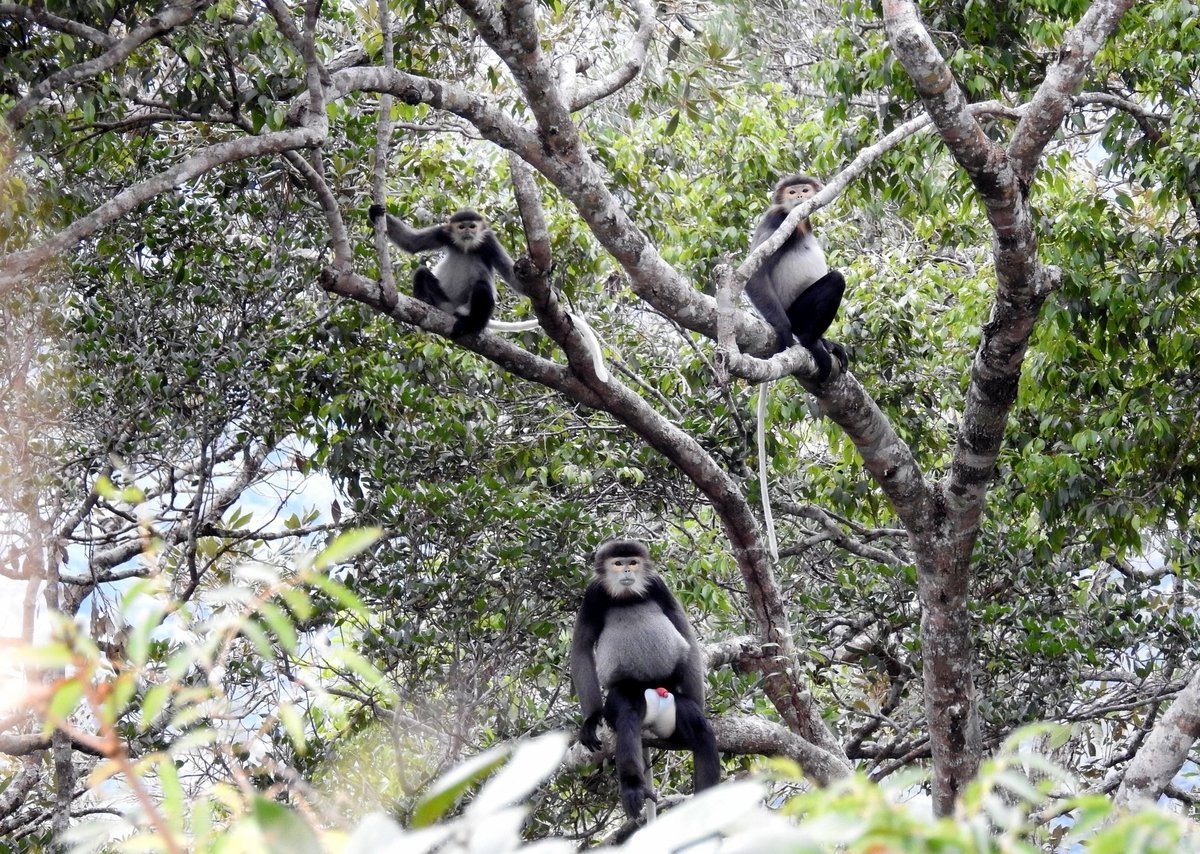
The black-shanked douc langur (Pygathrix nigripes) in the Hon Ba Nature Reserve. Photo: Luu Van Nong.
In an interview with Vietnam Agriculture and Nature Newspaper, Mr. Nguyen Thanh Tung, Deputy Director of the Hon Ba Nature Reserve Management Board, noted that the flora in Hon Ba is extremely rich, comprising 1,445 species, of which 209 are classified as rare and endangered (accounting for nearly 15% of the total species recorded). Notably, the reserve is also home to 26 endemic species, including Caesalpinia nhatrangensis Gagnep., Clerodendron nhatrangensis P.Dop., Ilex honbaensis Tard., Lithocarpus honbaensis A.Camus, Medinilla honbaensis Guill., Rhododendron honbanianum, Lithocarpus yersinii A.Camus, Reevesia yersinii A.Chev., and Thea yersinii A.Chev.
Hon Ba is home to 420 species of fauna, including mammals, birds, amphibians, and reptiles. Over 22% of the total, 89 species of vertebrates, are classified as rare and endangered, requiring urgent protection.
According to Mr. Tung, the Hon Ba Nature Reserve is currently divided into three main functional zones: a strict protection zone (covering nearly 50% of the area), an ecological restoration zone (over 49%), and an administrative and service zone. In addition, a vast buffer zone of more than 16,000 hectares plays a vital role in mitigating the pressure from human activities on the reserve.
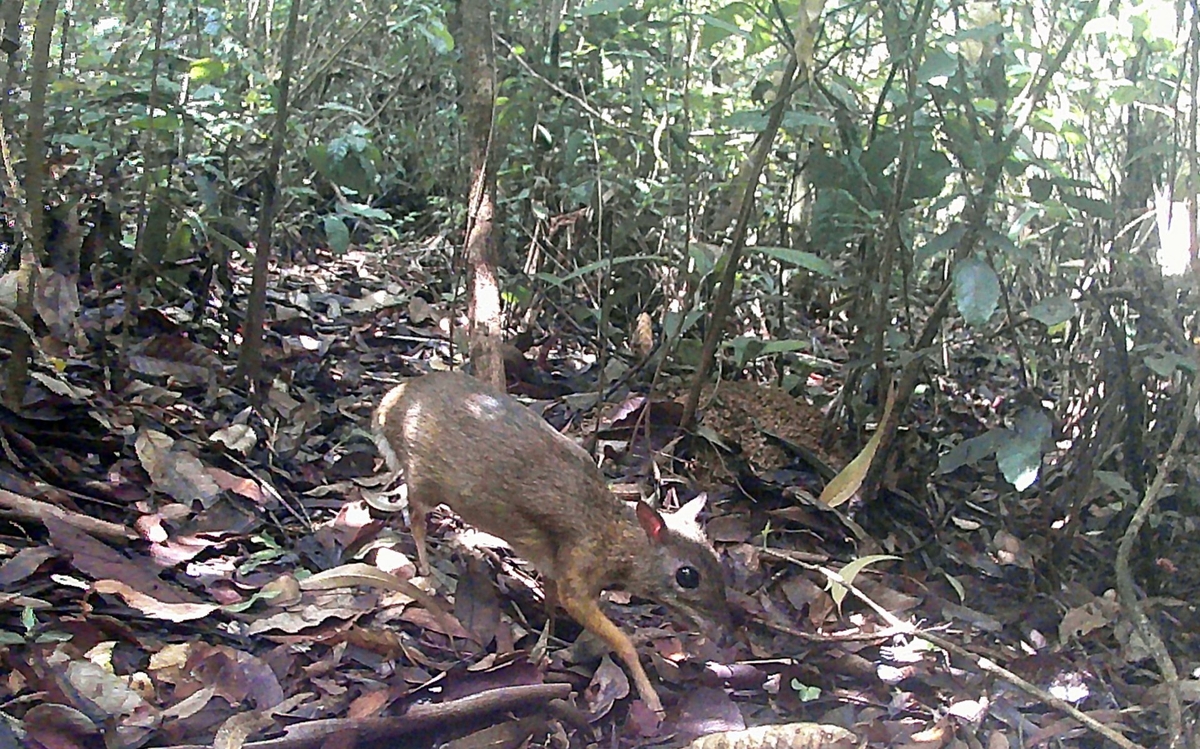
The Hon Ba Nature Reserve Management Board (Khanh Hoa) captured images of the lesser mouse-deer (Tragulus javanicus). Photo: Hon Ba Nature Reserve.
In recent years, the Hon Ba Nature Reserve Management Board has implemented many synchronous measures to protect and develop this unique ecosystem.
Forest protection has remained a top priority. Thanks to close coordination with relevant agencies and local governments, serious violations of the Law on Forestry have been effectively prevented. The forest cover within the reserve's jurisdiction has consistently remained above 92%, a testament to the success of protection efforts.
The Management Board also focuses on biodiversity conservation, the development of rare genetic resources, and maintaining the watershed protection function. Numerous indigenous and endemic plant species have been tested for acclimatization and cultivation.
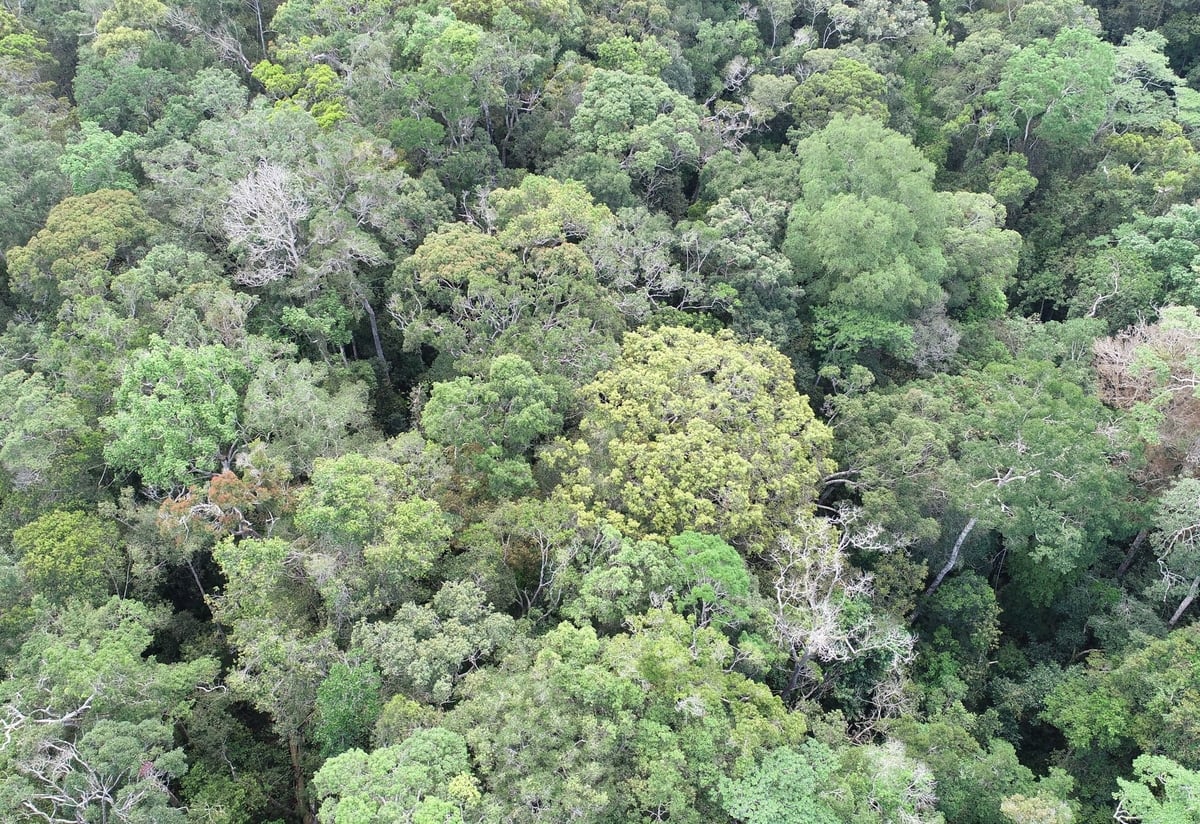
The Hon Ba Nature Reserve features a diverse ecosystem. Photo: Kim So.
In particular, wildlife is regularly rescued and released into their natural habitat. Many rare individuals, such as the pygmy slow loris (Nycticebus pygmaeus), Javan pangolin (Manis javanica), reticulated python (Python reticulatus), and several other primate species, have been successfully rescued and released back into the wild of Hon Ba.
Additionally, scientific research plays a pivotal role in deepening the understanding of Hon Ba’s ecosystem. Ongoing and completed studies, such as pilot cultivation of Ngoc Linh ginseng (Panax vietnamensis); in-situ conservation of Paphiopedilum orchid species; and assessments of macrofungal resources along with the conservation and development of valuable species, are expected to open up new opportunities, particularly in the development of medicinal herbs and the creation of sustainable livelihoods for local communities.
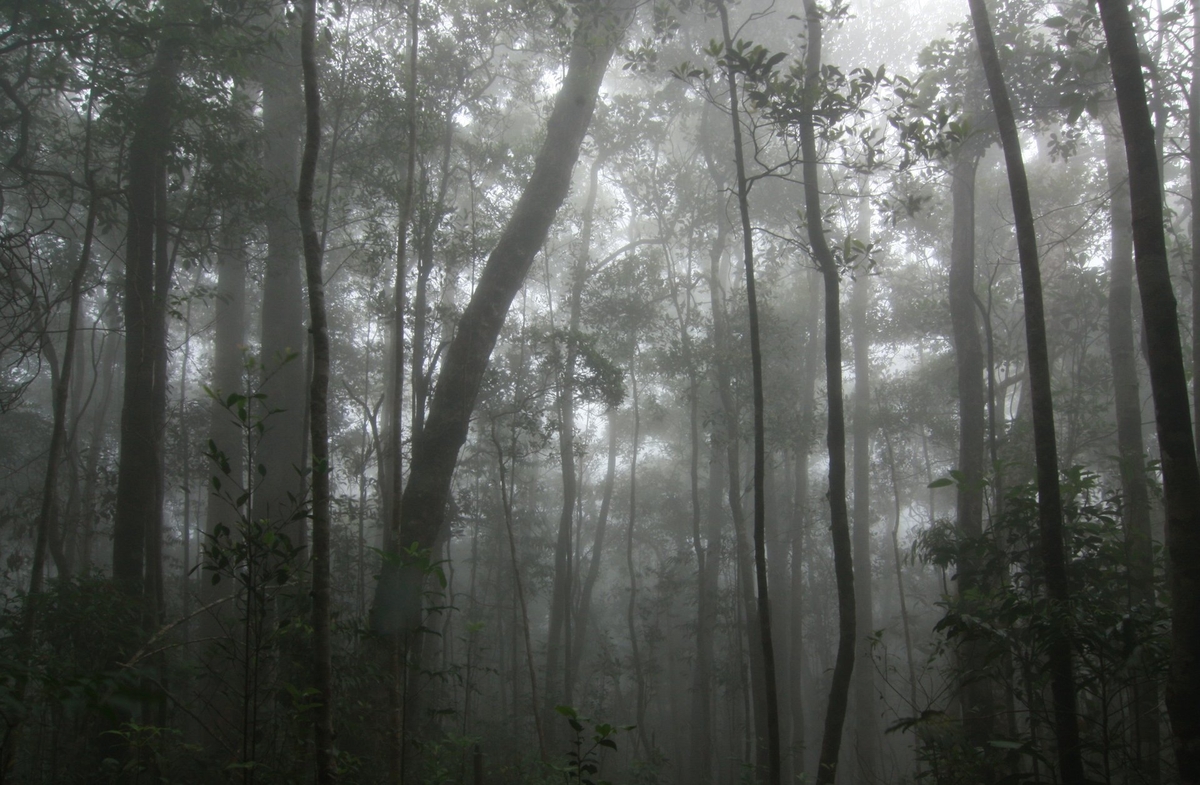
Dense morning fog blankets the Hon Ba Nature Reserve. Photo: Kim So.
Thanks to conservation efforts, Hon Ba continuously brings exciting surprises. In recent times, numerous new plant species have been discovered and recorded in the area, including several endemic species named after Hon Ba itself, such as Arisaema honbaense (Hon Ba arum), Goniothalamus flagellistylus, Trigonostemon honbaensis, Aspidistra truongii (Hon Ba wild garlic), Lasianthus honbaensis, and Calophyllum honbaense.
Besides, many rare plant species such as Taeniophyllum javanicum (a leafless orchid), Phreatia densiflora var. vietnamensis, and Cephalantheropsis laciniata have been recorded, expanding their distribution ranges within Vietnam.
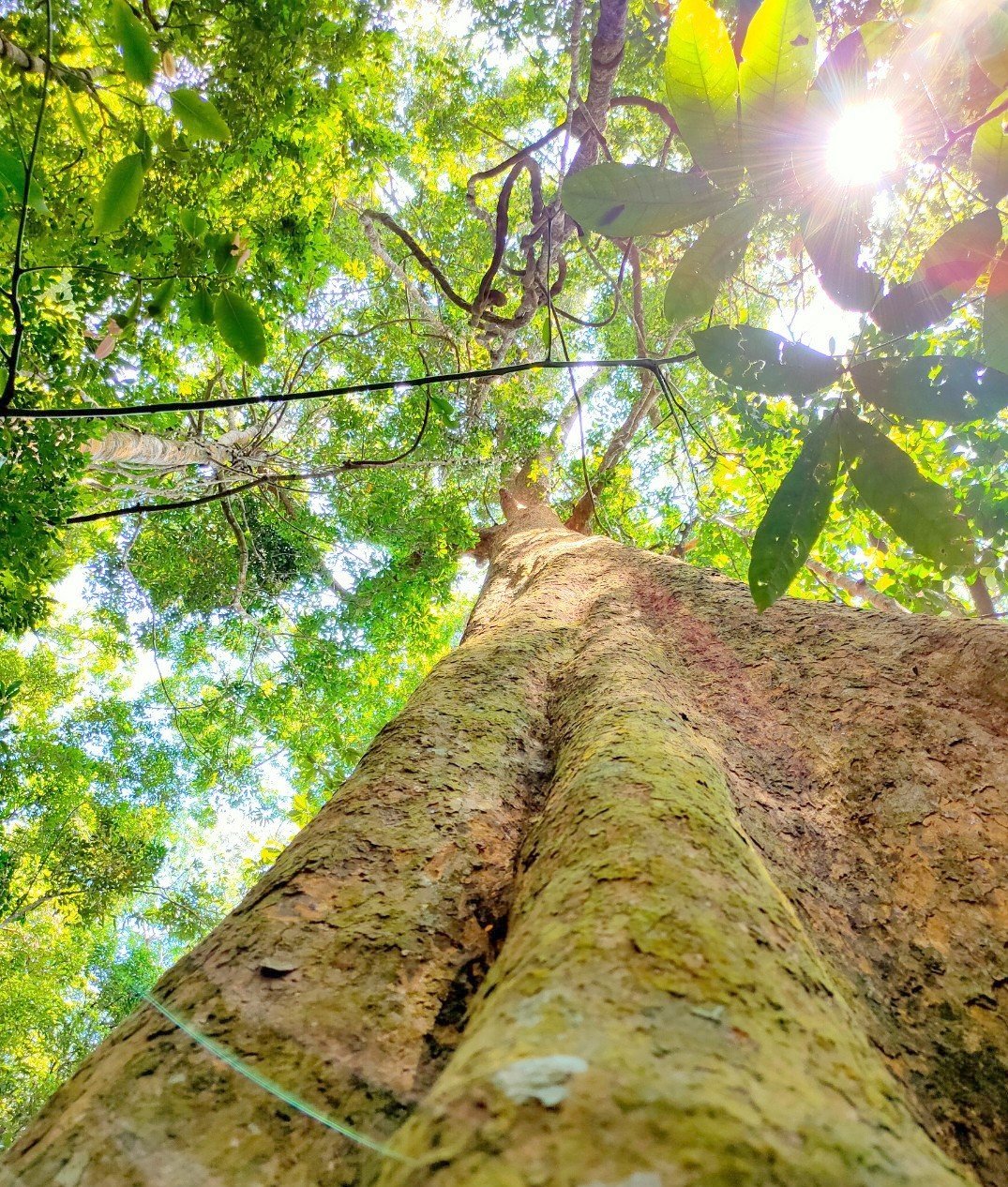
The forest within the Hon Ba Nature Reserve is being conserved and developed. Photo: Kim So.
Despite these significant achievements, the Hon Ba Nature Reserve still faces numerous challenges. According to the reserve's management board, the rugged terrain, fragmented by rivers and streams, along with small-scale slash-and-burn farming practices by local ethnic minority communities, pose major obstacles to managing and restoring the ecosystem.
Moreover, limited budget resources hinder the full implementation of approved forest protection and development projects. Several forest ranger stations are degraded and understaffed, which must be addressed.
Faced with these challenges, the Hon Ba Nature Reserve Management Board has proposed that local governments at all levels adopt the support policies, provide vocational guidance, and create stable livelihoods for local communities to reduce pressure on the forest. They have also called on departments, branches, and the People's Committee of Khanh Hoa province to allocate sufficient funding to carry out the activities outlined in the sustainable forest management plan and forest protection and development projects. Strengthening human resources is also essential to enable the unit to effectively fulfill its assigned duties.
Translated by Thu Huyen

(VAN) The Integrated Plant Health Management (IPHM) helps farmers in Quang Ngai increase rice production efficiently and sustainably.

(VAN) Developing low-emission cultivation technology packages, MRV system, strengthening multi-stakeholder cooperation are to realize the goal of low-emission crop production.
/2025/10/23/5928-2-194850_964.jpg)
(VAN) The 'Regenerative cocoa production to support livelihood development in Vietnam' (ReCoPro) project marks an important step toward sustainable cocoa production.

(VAN) Reducing antibiotic dependence in livestock production helps protect public health, enhance food safety, and promote sustainable agricultural development.

(VAN) Experts describe Viet Nam as a 'policy laboratory' within ASEAN, where new agroecological, green finance, and risk-management initiatives are being piloted before wider regional adoption.

(VAN) Limiting rice straw burning and reusing agricultural by-products as materials or fertilizers not only improves soil health but also helps clean the air.

(VAN) ASSET delivers long-term vision and strategy, innovative models, learning networks, policy impact, and measurable environmental benefits.